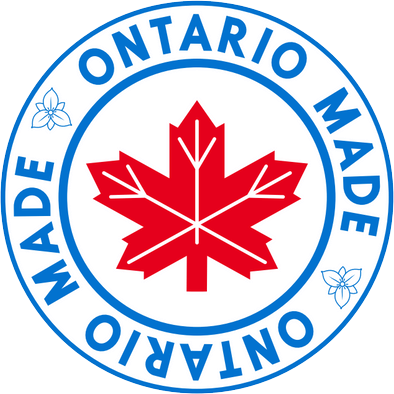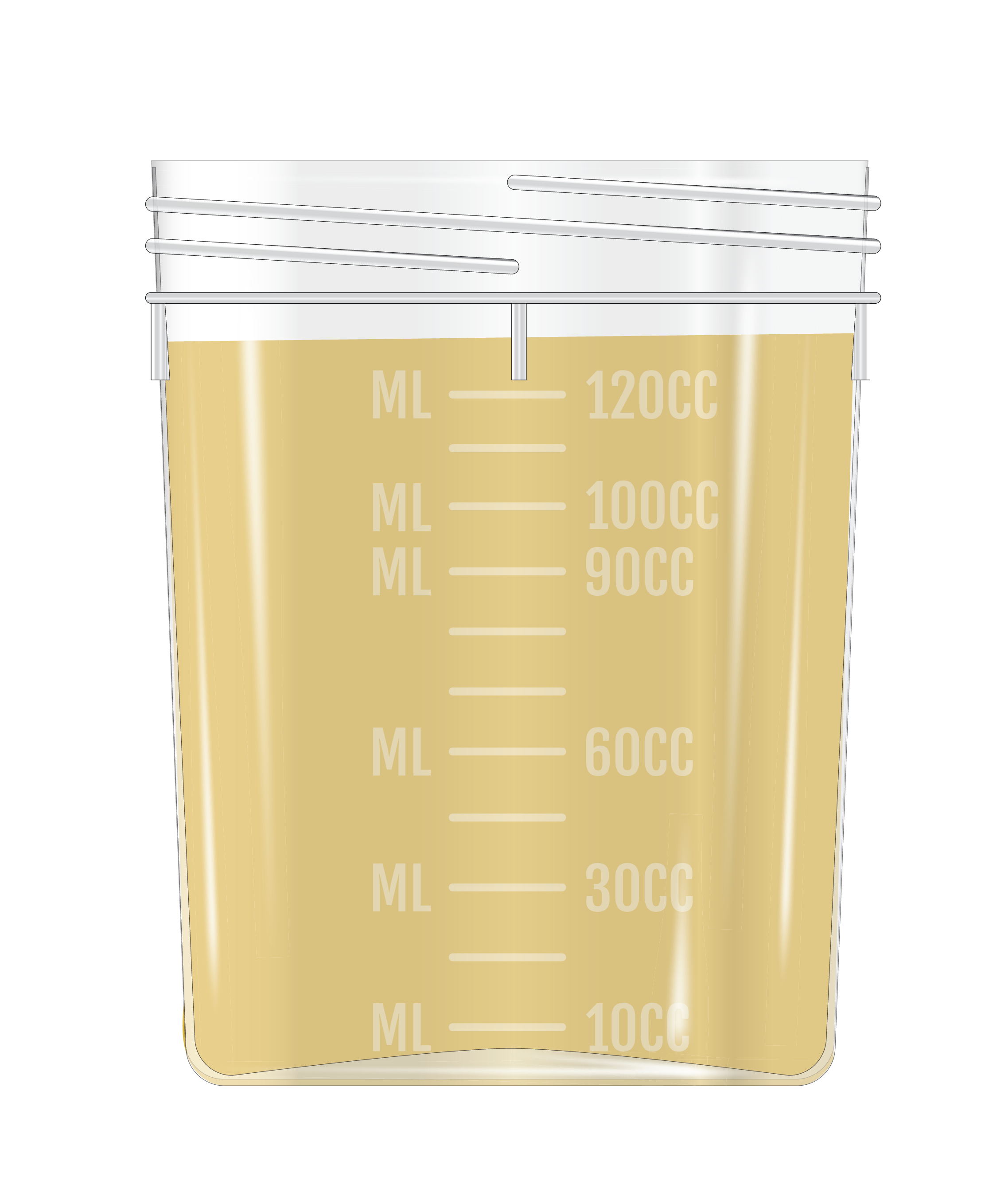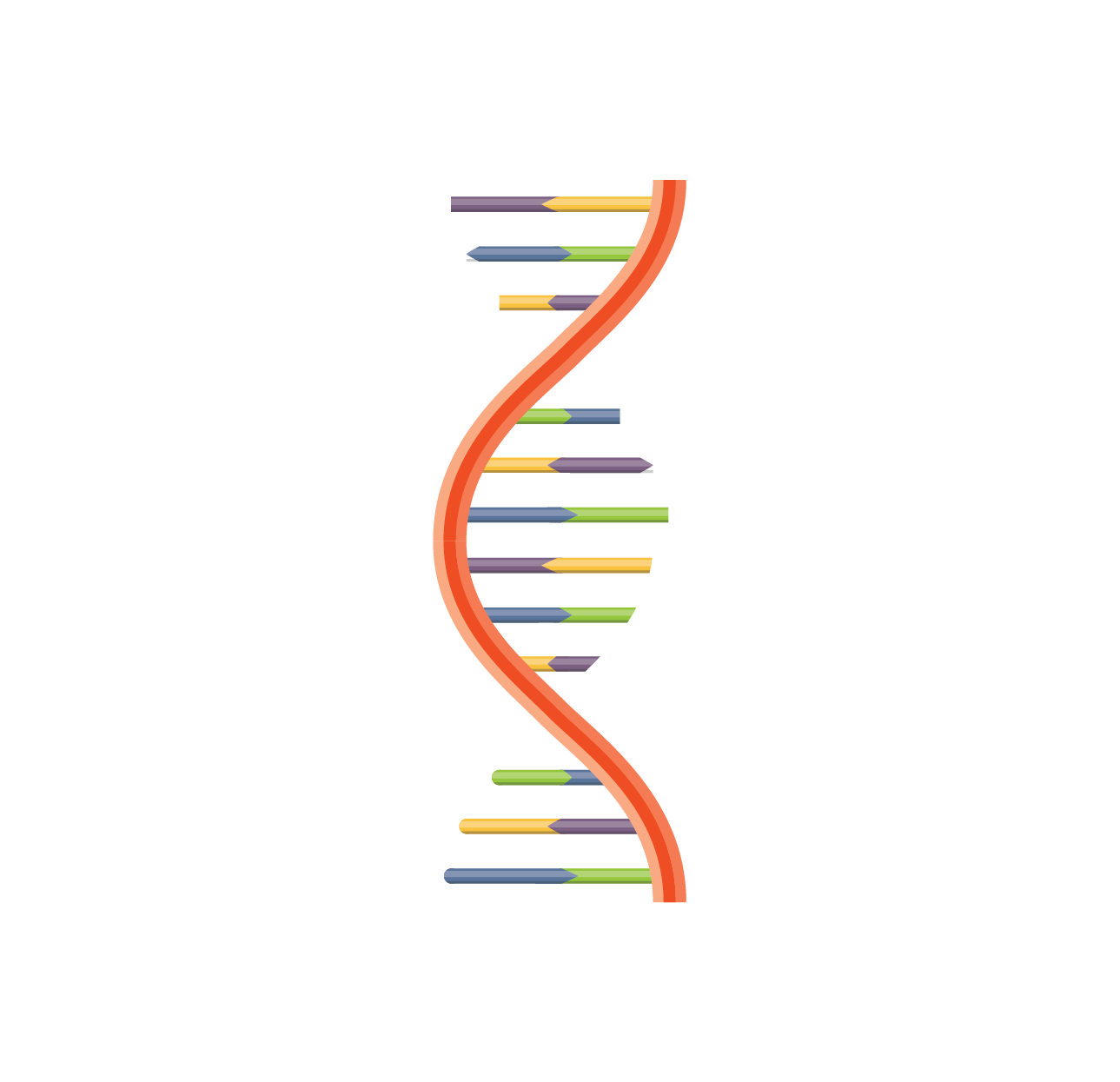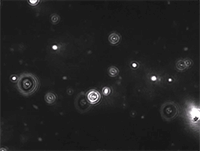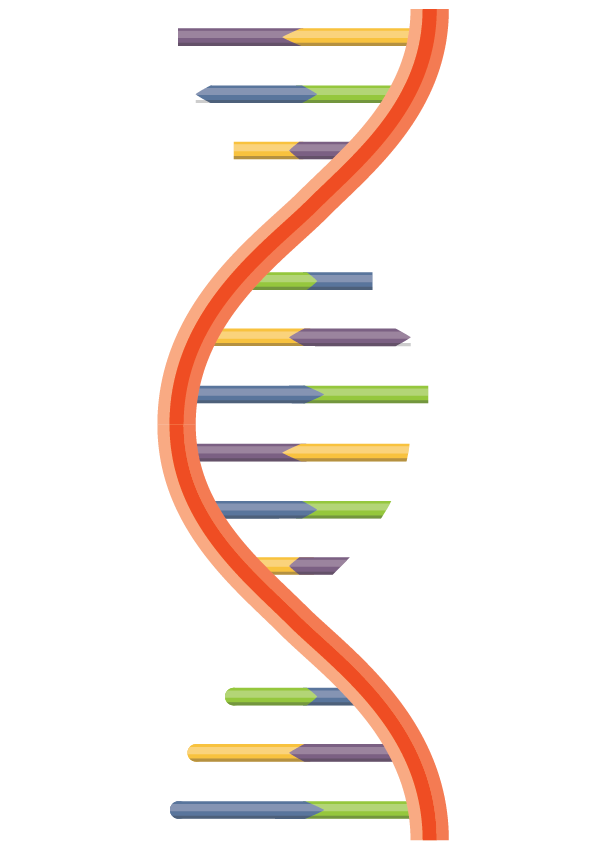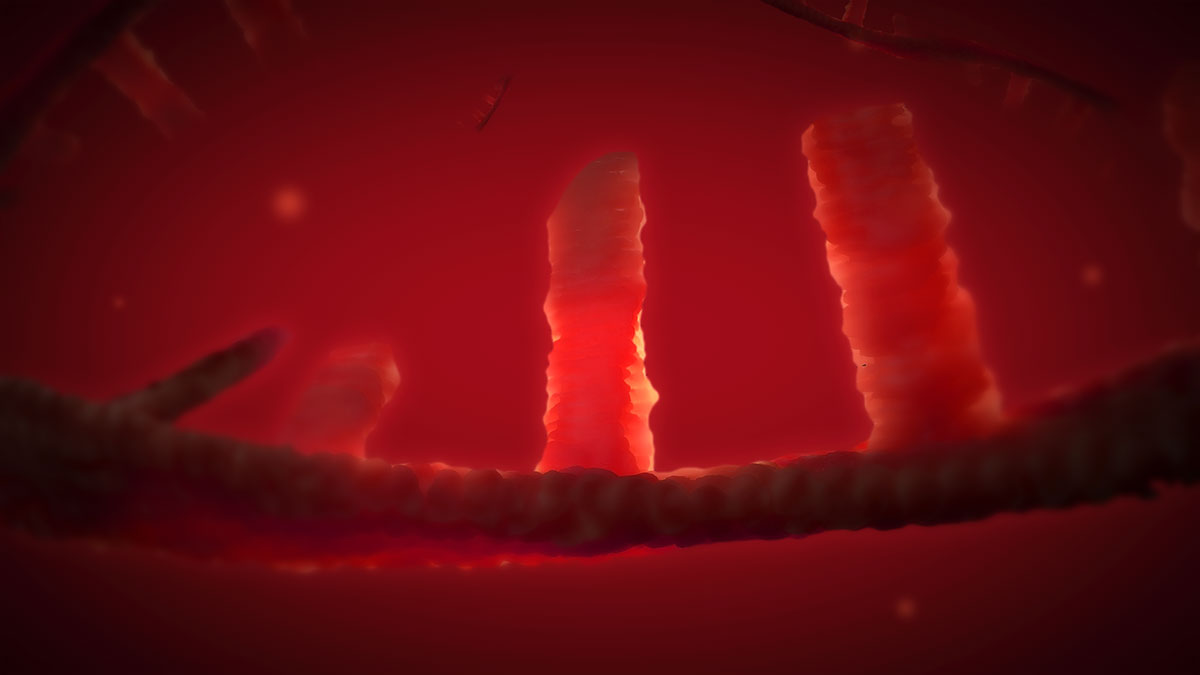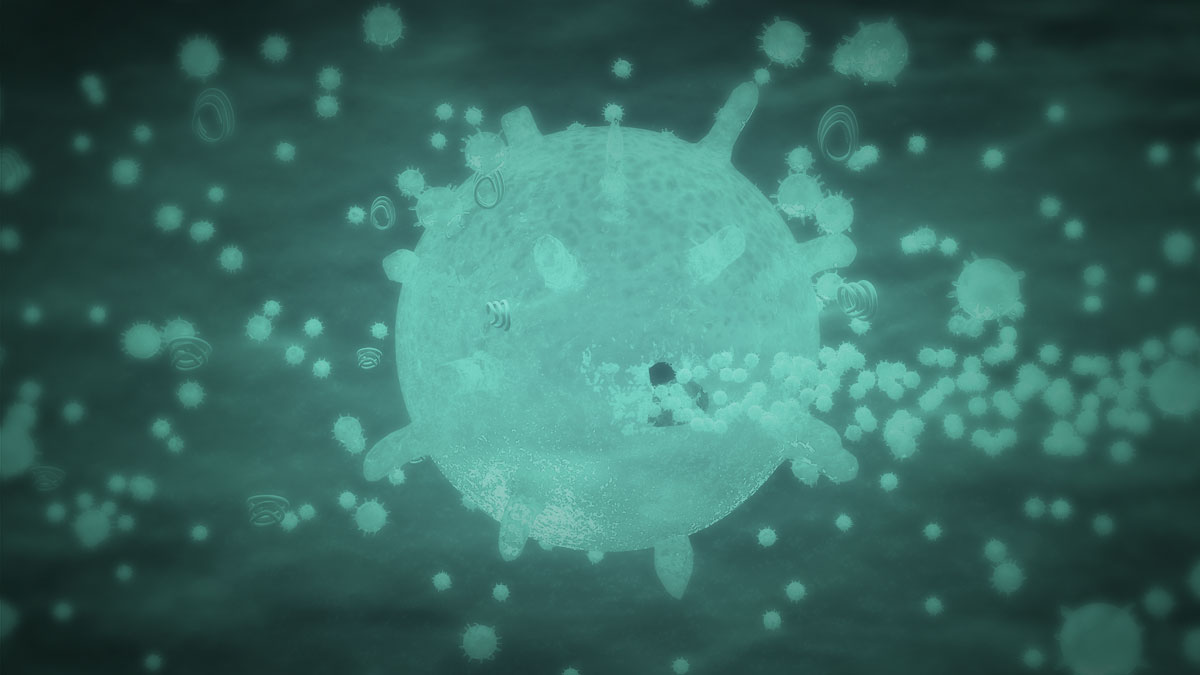Complete Urine Workflow
Urine Collection and Preservation Devices
Best-in-class solutions for rapid collection and preservation of urine samples
Featured
Publication: IgA nephropathy is associated with elevated urinary mitochondrial DNA copy numbers.
Explore the findings
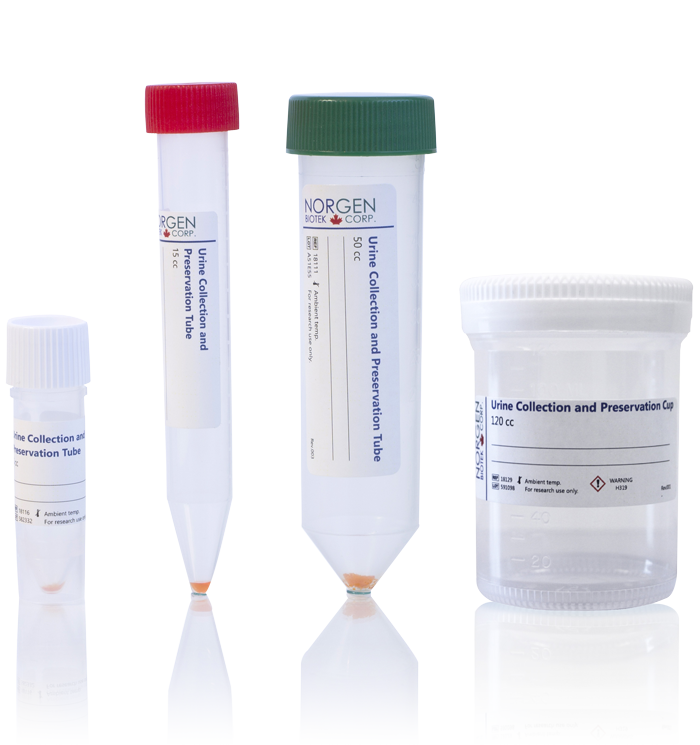
Urine Collection and Preservation Devices
Select each molecule to learn more about Norgen's unique tube and how it separates DNA/RNA from urine samples
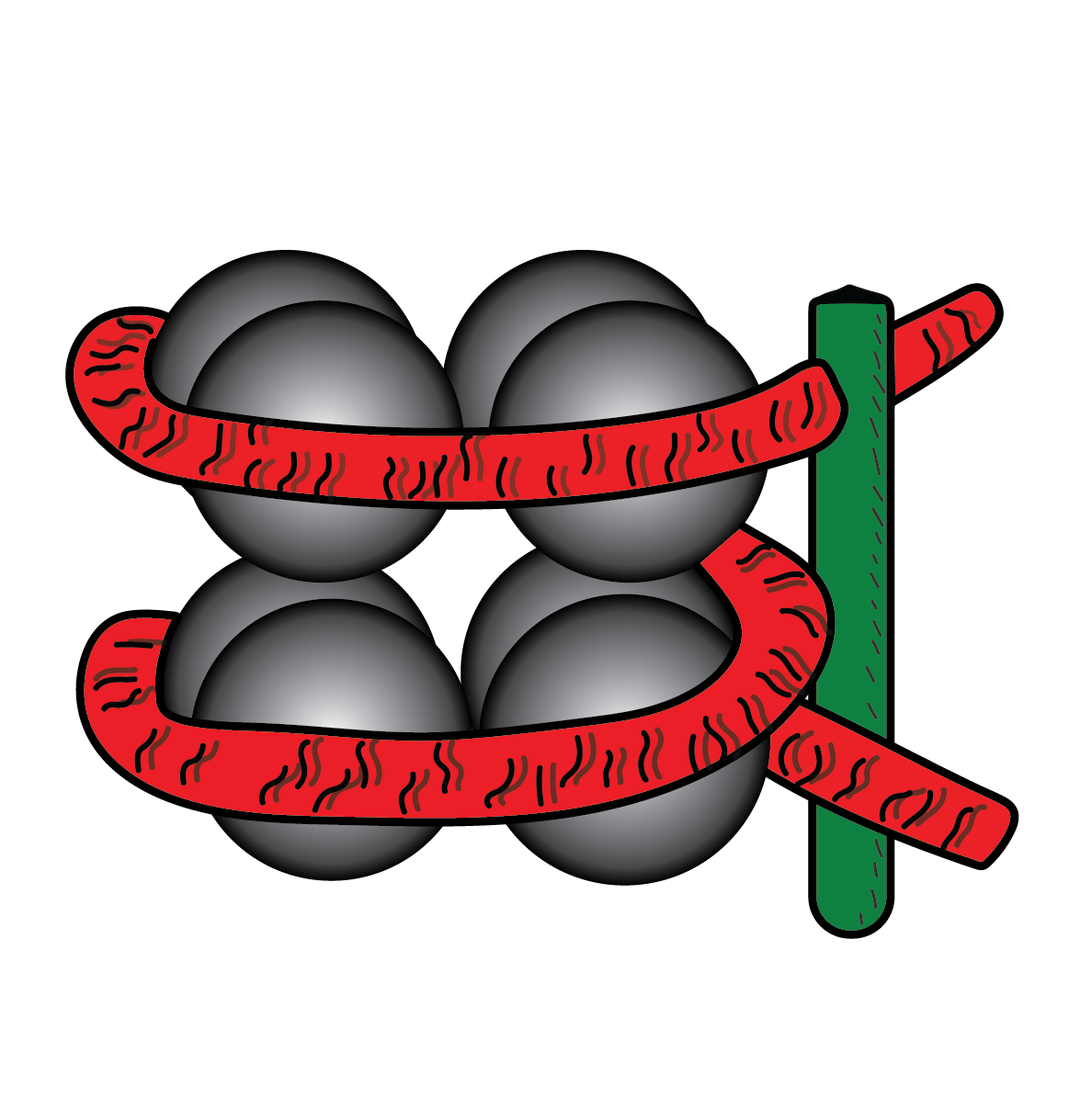 cf-DNA×
cf-DNA× cf-RNA×
cf-RNA× Cellular g-DNA×
Cellular g-DNA×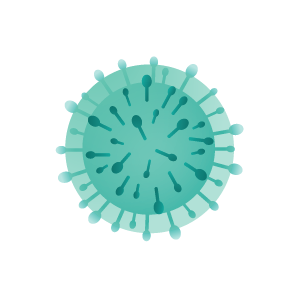 Exosome×
Exosome× Micro RNA×
Micro RNA×Urine Collection and Preservation Devices
Norgen's Urine Collection and Preservation Devices provide a rapid and simple method for the collection, preservation and shipping of urine samples. The Urine Preservative eliminates the need to immediately process or freeze samples and allows the samples to be shipped to centralized testing facilities at ambient temperatures. Nucleic acids and proteins are preserved for more than 2 years at room temperature. Compatible with most DNA/RNA isolation methods.
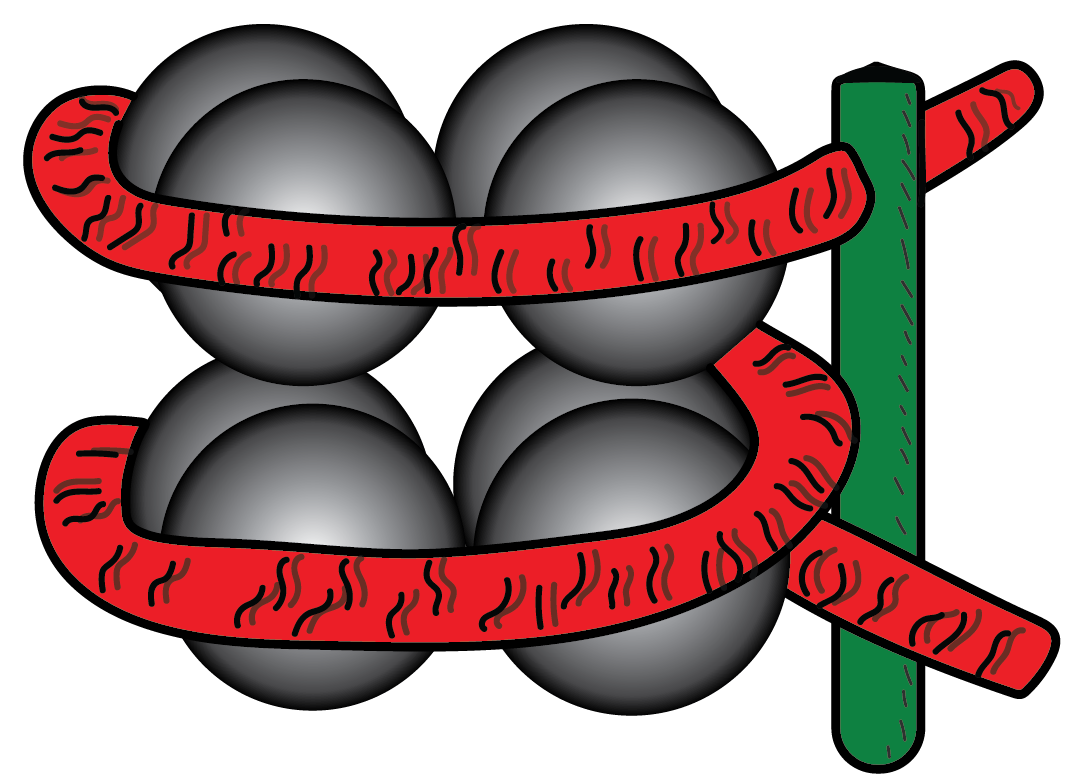
cf-DNA
Recent evidence indicates that cell-free circulating DNA (cf-DNA) contains valuable information for the discovery of biomarkers that can help with early detection of certain cancer types and for monitoring the disease status. The advantage for using urine as a source for cancer biomarkers is that it can be acquired in large quantities without using invasive procedures. In addition, repeated sampling from the same individual is applicable, which facilitates longitudinal studies. Urine cell-free circulating DNA (cf-DNA) has been utilized for the early diagnosis, prognosis and monitoring of therapy for several cancer types and autoimmune diseases, as well as for investigating fetal DNA that is normally present in the maternal blood. This cf-DNA is usually present as short fragments, generally between 150 and 250 bp or its duplicates, and is derived either from the apoptotic process, necrotic process or from the fetus.
Links
cf-RNA
Recent evidence indicates that cell-free circulating RNA (cf-RNA) including exosomal RNA in urine contains valuable information for the discovery of biomarkers that can help for the early detection of certain cancer types and for monitoring the disease status as well as for the detection of any infectious pathogens. Cell-free RNA may serve as biomarkers for various diseases including cancer.
Links
Cellular g-DNA
Many advantages favor the use of urinary DNA for cancer biomarker discovery and diagnosis of different pathogens over the use of blood and tissue samples. DNA found in urine can be divided into 2 basic categories, large, and small. The larger genomic DNA (gDNA) species is generally greater than 1 kb in size, and appears to be derived mainly from exfoliated cells. The second species is smaller, generally between 150 and 250 bp (apoptotic-DNA), and derives, at least in part, from the circulation. The second species is also considered as an RNA/DNA hybrid.
Links
Exosome
Exosomes are small extracellular vesicles released from cells throughout the body. They are typically between 40-150nm in diameter and act as cellular "messengers", carrying their cargo of proteins, lipids, and cell-free nucleic acids throughout the bloodstream to recipient cells. Since exosomes are released from a variety of cell types, including tumor cells, analyzing their content can provide unique biomarkers for various diseases.
Links
Micro RNA
Small RNA molecules are often studied due to their ability to regulate gene expression. miRNAs are typically 20-25 nucleotides long, and regulate gene expression by binding to mRNA molecules and affecting their stability or translation. Several recent studies showed that miRNA regulates cell growth and apoptosis.
Links
Proteins
Urinary proteins are important for many applications such as biomarker discovery, differential expression of proteins in various diseases, and diagnosis. Proper protein concentration prepares the molecules for downstream applications including SDS-PAGE, 2D gels, Whole protein mass spectrometry, MALDI-TOF, LC/MS, Western blotting and Protein microarray.
Links
Cellular RNA
Urine contains various sizes of RNA; from large mRNA and ribosomal RNA down to small RNAs. These small RNAs include regulatory RNA molecules such as microRNA (miRNA) as well as tRNA and 5S rRNA.
Links
Features & Benefits
- RNA/microRNA/DNA/Proteins are preserved for more than 2 years at room temperature in Norgen's Urine Preservative
- Compatible with most DNA, Total RNA, microRNA and protein isolation methods
- Preservative is available in a single dose liquid format (ampoule)
- Preservative is also available in a dried format in tubes - Urine Collection and Preservation Tubes
- Convenient and useful for preserving cell-free macromolecules as well as exfoliated cells and microorganisms during shipping of urine at ambient temperatures
Supporting Data
Figure 1. Stability of RNA in Norgen's Urine Preservative. Urine samples were collected from numerous healthy donors and pooled, and then the urine was aliquoted into 5 mL aliquots in Norgen's Urine Collection and Preservation Tubes (5 cc) (Cat. 18116). The preserved urine was stored at -20°C, 4°C, and room temperature for up to 24 months. Urine RNA was then subsequently isolated at time 0, 1 month, 2 months, 4 months, 8 months, 12 months, 16 months, and 24 months from the preserved urine using Norgen's Urine Total RNA Purification Maxi Kit (Slurry Format) (Cat. 29600).
Figure 2. Stability of Proteins in Norgen's Urine Preservative. Urine samples were collected from numerous healthy donors and pooled, and then the urine was aliquoted into 5 mL aliquots in Norgen's Urine Collection and Preservation Tubes (5 cc) (Cat# 18116). The preserved urine was stored at -20°C, 4°C and room temperature for up to 24 months. Urine proteins were then subsequently isolated at time 0, 1 month, 2 month, 4 month, 8 month, 12 month, 16 month, 20 month and 24 month from the preserved urine using Norgen's Urine Protein Concentration Kit (Cat# 17400).To test the purified urine proteins, the BioRad protein assay, based on the Bradford assay, was used to determine the concentrations of the total urinary proteins. In this assay, the standard curve was constructed using known amounts of bovine serum albumin (BSA) (NEB, Pickering, ON, Canada).The concentrations of protein samples were determined based on this standard curve of known protein concentration. The absorbance (Abs) readings were taken at 595 nm. As it can be seen, all the preserved urine samples stored at all 3 temperatures yielded similar total protein yield with no significant change from 0 months to 24 months. Conclusion: Urine proteins can be stored in Norgens Urine Preservative for up to 2 years at room temperature, -20C and 4C without any change in quantity of proteins.
Figure 3. Stability of DNA in Norgen's Urine Preservative. Urine samples were collected from numerous healthy donors and pooled, and then the urine was aliquoted into 5 mL aliquots in Norgen's Urine Collection and Preservation Tubes (5 cc) (Cat# 18116). The preserved urine was stored at -20°C, 4°C and room temperature for up to 48 months. Urine DNA was subsequently isolated at time 0, 1 month, 2 months, 4 months, 8 months, 12 months, 16 months, 20 months and 24 months from the preserved urine using Norgen's Urine DNA Isolation Kit (Slurry Format) (Cat# 48800). To test the integrity of the purified DNA, 3 µL of each elution was used in a 20 µL Taqman PCR reaction run on a CFX96 Touch Real-Time PCR Detection System (Bio-Rad) using Norgens 2X PCR Master Mix with 5s rRNA primers. As it can be seen, all the DNA samples were successfully amplified. Furthermore, the quality of the concentrated and preserved urine DNA stored at all 3 temperatures did not significantly change from 0 months to 24 months, as indicated by the fact that the Ct value remained consistent.
Figure 4. Gram negative bacteria was spiked into urine collected using Norgen's Urine Preservative (9 mL urine and 1 mL urine preservative) and incubated at 37°C for up to 6 days. No viable cells remained at day 6.
Figure 5. Stability of Proteins in Norgen's Urine Preservative. Norgen's Urine Collection and Preservation Tubes contain Norgen's Urine Preservative in a dried form. A 50 mL urine sample was collected into the Urine Collection and Preservation Tube (50 cc) and was mixed well with the dried preservative. The preserved urine was stored at -20°C, 4°C, room temperature and 55°C for up to 6 months. Urine proteins were subsequently isolated at time 0, 1 month, 2 months, 4 months and 6 months from the preserved urine sample. The proteins isolated from the preserved urine samples stored at -20°C, 4°C, room temperature and 55°C at the various time points were qualitatively analyzed on 12% SDS-PAGE gel. As it can be seen, all the preserved urinary proteins showed no degradation. The urine samples stored at 55°C can allow us to extrapolate results based on accelerated-aging, and therefore the samples stored at 55°C for 6 months show equal stability to concentrated urine preserved for 2.5 years at room temperature (24°C). Therefore, the proteins in urine samples stored in Norgen's Urine Preservative are stable at room temperature for up to 2.5 years
Isolate High Quality RNA and DNA from Urine Samples
Use the interactive workflow to find the product right for you
Fresh Or Frozen Urine Sample
-
Whole Urine
-
Total RNA
Purify high quality total RNA of all sizes from urine
-
Total DNA
Isolate high quality total DNA of all sizes from urine
-
Cell Pellet
Isolate high quality RNA or DNA from exfoliated cells or bacteria from urine
-
-
Cell-free Urine
-
cf-RNA
Purify high quality cell-free circulating and exosomal RNA from urine
-
cf-DNA
Isolate high quality cell-free circulating DNA from urine
-
cfc-Nucleic Acids
Purify high quality cell-free circulating DNA and cell-free circulating RNA from urine
-
Exosomes
Purify high quality intact exosomes from urine
-
-
Total RNA
Purify high quality total RNA of all sizes from urine
-
Urine MicroRNA Purification Kit (Cat. 29000)
Input Vol Range: 0.5 - 1 mL
-
Urine Total RNA Purification (slurry) format (Cat. 29600)
Input Vol Range: 5 - 10 mL
-
Urine Total RNA Purification 96-well format (Cat. 29650)
Input Vol Range: 5 - 10 mL
-
-
Total DNA
Isolate high quality total DNA of all sizes from urine
-
Urine DNA Isolation Kit (Cat. 18100)
Input Vol Range: 50 µL to 1.75 mL
-
Urine DNA Isolation (Slurry format) - (Cat. 48800)
Input Vol Range: 3 mL to 25 mL
-
Urine DNA Isolation Maxi Kit (Slurry format) - (Cat. 50100)
Input Vol Range: 25 mL to 80 mL
-
-
Cell pellet
Isolate high quality RNA or DNA from exfoliated cells or bacteria from urine
-
Urine Exfoliated Cell RNA Purification Kit (Cat. 22550)
Input Vol Range: 1 mL to 50 mL
-
Urine DNA Isolation Kit for Exfoliated Cells or Bacteria (Cat. 47050)
Input Vol Range: 1 mL to 50 mL
-
-
cf-RNA
Purify high quality cell-free circulating and exosomal RNA from urine
-
Urine Cell-Free Circulating RNA Purification Mini Kit (Cat. 56900)
Input Vol Range: 250 μL to 2 mL
-
Urine Cell-Free Circulating RNA Purification Midi Kit (Cat. 57000)
Input Vol Range: 2 mL to 10 mL
-
Urine Cell-Free Circulating RNA Purification Maxi Kit (Cat. 57100)
Input Vol Range: 10 mL to 30 mL
-
-
cf-DNA
Isolate high quality cell-free circulating DNA from urine
-
Urine Cell-Free Circulating DNA Purification Mini Kit (Cat. 56600)
Input Vol Range: 250 µL to 2 mL
-
Urine Cell-Free Circulating DNA Purification Midi Kit (Cat. 56700)
Input Vol Range: 2 mL to 10 mL
-
Urine Cell-Free Circulating DNA Purification Maxi Kit (Cat. 56800)
Input Vol Range: 10 mL - 30 mL
-
-
cfc-Nucleic Acids
Purify high quality cell-free circulating DNA and cell-free circulating RNA from urine
-
Urine Cell-Free Circulating and Viral Nucleic Acid Purification Mini Kit (Cat. 59900)
Input Vol Range: 250 µL to 2 mL
-
Urine Cell-Free Circulating and Viral Nucleic Acid Purification Midi Kit (Cat. 60000)
Input Vol Range: 2 mL - 10 mL
-
Urine Cell-Free Circulating and Viral Nucleic Acid Purification Maxi Kit (Cat. 60100)
Input Vol Range: 10 mL - 30 mL
-
-
Exosomes
Purify high quality intact exosomes from urine
-
Urine Exosome Purification and RNA Isolation Kits
(Cat. 58400, 58700, 58800)
-
Urine Exosome Purification and RNA Isolation Mini Kit (Cat. 58400)
Input Vol Range: 250 µL to 1 mL
-
Urine Exosome Purification and RNA Isolation Midi Kit (Cat. 58700)
Input Vol Range: 2 mL to 10 mL
-
Urine Exosome Purification and RNA Isolation Maxi Kit (Cat. 58800)
Input Vol Range: 11 mL to 30 mL
-
-
Urine Exosome and Free-Circulating RNA Isolation Kits
(Cat. 59200, 59300, 59400)
-
Urine Exosome and Free-Circulating RNA Isolation Mini Kit (Cat. 59200)
Input Vol Range: 250 µL to 1 mL
-
Urine Exosome and Free-Circulating RNA Isolation Midi Kit (Cat. 59300)
Input Vol Range: 2 mL to 10 mL
-
Urine Exosome and Free-Circulating RNA Isolation Maxi Kit (Cat. 59400)
Input Vol Range: 11 mL to 30 mL
-
-
Urine Exosome Purification Kits
(Cat. 57700, 57800, 57900)
-
Urine Exosome Purification Mini Kit (Cat. 57700)
Input Vol Range: 250 µL to 1 mL
-
Urine Exosome Purification Midi Kit (Cat. 57800)
Input Vol Range: 2 mL to 10 mL
-
Urine Exosome Purification Maxi Kit (Cat. 57900)
Input Vol Range: 11 mL to 30 mL
-
Fresh or frozen Urine Sample
-
Whole Urine
-
Total RNA
Purifies total RNA from urine
-
Urine MicroRNA Purification Kit (Cat. 29000)
Input Vol Range: 0.5 - 1 mL
-
Urine Total RNA Purification (slurry) format (Cat. 29600)
Input Vol Range: 5 - 10 mL
-
Urine Total RNA Purification 96-well format (Cat. 29650)
Input Vol Range: 5 - 10 mL
-
-
Total DNA
Isolates total DNA from urine
-
Urine DNA Isolation Kit (Cat. 18100)
Input Vol Range: 50 µL to 1.75 mL
-
Urine DNA Isolation (Slurry format) - (Cat. 48800)
Input Vol Range: 3 mL to 25 mL
-
Urine DNA Isolation Maxi Kit (Slurry format) - (Cat. 50100)
Input Vol Range: 25 mL to 80 mL
-
-
Cell Pellet
Isolates and purifies total RNA and total DNA from urine
-
Urine Exfoliated Cell RNA Purification Kit (Cat.22550)
Input Vol Range: 1 mL to 50 mL
-
Urine DNA Isolation Kit for Exfoliated Cells or Bacteria (Cat. 47050)
Input Vol Range: 1 mL to 50 mL
-
-
-
Cell-free Urine
-
cf-RNA
Purifies and concentrates cf circulating RNA from urine
-
Urine Cell-Free Circulating RNA Purification Mini Kit (Cat. 56900)
Input Vol Range: 250 μL to 2 mL
-
Urine Cell-Free Circulating RNA Purification Midi Kit (Cat. 57000)
Input Vol Range: 2 mL to 10 mL
-
Urine Cell-Free Circulating RNA Purification Maxi Kit (Cat. 57100)
Input Vol Range: 10 mL to 30 mL
-
-
cf-DNA
Isolates and concentrates cf circulating DNA from urine
-
Urine Cell-Free Circulating DNA Purification Mini Kit (Cat. 56600)
Input Vol Range: 250 µL to 2 mL
-
Urine Cell-Free Circulating DNA Purification Midi Kit (Cat. 56700)
Input Vol Range: 2 mL to 10 mL
-
Urine Cell-Free Circulating DNA Purification Maxi Kit (Cat. 56800)
Input Vol Range: 10 mL - 30 mL
-
-
cfc- Nucleic Acids
Purifies and concentrates both cf circulating DNA & circulating RNA urine
-
Urine Cell-Free Circulating and Viral Nucleic Acid Purification Mini Kit (Cat. 59900)
Input Vol Range: 250 µL to 2 mL
-
Urine Cell-Free Circulating and Viral Nucleic Acid Purification Midi Kit (Cat. 60000)
Input Vol Range: 2 mL - 10 mL
-
Urine Cell-Free Circulating and Viral Nucleic Acid Purification Maxi Kit (Cat. 60100)
Input Vol Range: 10 mL - 30 mL
-
-
Exosomes
Purify high quality intact exosomes from urine
-
Urine Exosome RNA Isolation Kit (Cat. 47200)
Input Vol Range: 1 mL to 10 mL
-
Urine Exosome Purification and RNA Isolation Mini Kit (Cat. 58400)
Input Vol Range: 250 µL to 1 mL
-
Urine Exosome Purification and RNA Isolation Midi Kit (Cat. 58700)
Input Vol Range: 2 mL to 10 mL
-
Urine Exosome Purification and RNA Isolation Maxi Kit (Cat. 58800)
Input Vol Range: 11 ml to 30 mL
-
Urine Exosome and Free-Circulating RNA Isolation Mini Kit (Cat. 59200)
Input Vol Range: 250 µL to 1 mL
-
Urine Exosome and Free-Circulating RNA Isolation Midi Kit (Cat. 59300)
Input Vol Range: 2 mL to 10 mL
-
Urine Exosome and Free-Circulating RNA Isolation Maxi Kit (Cat. 59400)
Input Vol Range: 11 ml to 30 mL
-
Urine Exosome Purification Mini Kit (Cat. 57700)
Input Vol Range: 250 µL to 1 mL
-
Urine Exosome Purification Midi Kit (Cat. 57800)
Input Vol Range: 2 mL to 10 mL
-
Urine Exosome Purification Maxi Kit (Cat. 57900)
Input Vol Range: 11 ml to 30 mL
-
-
Discover Norgen's NGS Services and Capture the Most From Your Samples
Next Generation Sequencing
Designed to Discover
Sequence Ultra-low Inputs from Plasma/Serum, Exosomes and More with Norgen's Small RNA-Seq Services.
- Capture a Complete Range of Small RNA and miRNA species
- Sequence Ultra-Low Inputs from Liquid Biopsies and Exosomes
- Illumina® NextSeq Sequencing Platform
- Understand Post-Transcriptional Regulation with Bioinformatics Analysis Service
- Examine Differential Expression and Discover Novel Biomarkers
- Fast Turn Around Time | 3 - 4 weeks
Featured Publications
| Featured | ||
| Title | Extracellular circular RNA profiles in plasma and urine of healthy, male college athletes | |
| Journal | Scientific Data volume 8, Article number: 276. 2021. | |
| Authors | Hutchins, E., Reiman, R., Winarta, J. et al. | |
| Title | Comparison of Four Commercial Kits for Isolation of Urinary Cell-Free DNA and Sample Storage Conditions |
| Journal | Diagnostics 2020, 10(4), 234.2020 |
| Authors | Lee, E.Y.; Lee, E.-J.; Yoon, H.; Lee, D.H.; Kim, K.H. |
| Title | IgA nephropathy is associated with elevated urinary mitochondrial DNA copy numbers |
| Journal | Scientific Reports volume 9, Article number: 16068. 2019. |
| Authors | Yu, B.C., Cho, NJ., Park, S. et al. |
| Title | Comparison of MicroRNA Content in Plasma and Urine Indicates the Existence of a Transrenal Passage of Selected MicroRNAs |
| Journal | Adv Exp Med Biol;924:97-100.. 2016. |
| Authors | Pazourkova, E. et al. |
| Title | Mass Spectrometric Quantification of Urinary Netrin-1 Protein in Renal Transplant Recipients |
| Journal | Current Proteomics, Volume 13, Number 1, 2016, pp. 31-38(8). 2016. |
| Authors | Ozcan, Filiz; Akbas, Halide; Suleymanlar, Gultekin; Aslan, Mutay; Yucel, Gultekin |
| Title | Characterization and deep sequencing analysis of exosomal and non-exosomal miRNA in human urine |
| Journal | TECHNICAL NOTES| VOLUME 86, ISSUE 2, P433-444. AUGUST 01, 2014 |
| Authors | Cheng, L., Sun, X., Scicluna, B.J., Coleman, B., Hill, A. |
Technical Documentation
- Isolation of DNA from as Little as 25 µL of Urine Using Norgen's Urine DNA Isolation Kit
- Isolation of High Quality Urinary DNA using Norgen's Urine DNA Isolation Kit
- Isolation of High Quality Urinary DNA Using Norgen's Urine DNA Mini Slurry Kit
- Determination of the DNA Molecular Weight (MW) from different Norgen Columns and Isolation Methods
- Effect of microRNA GC Content on RNA Purification Efficiency
- Revised Guidelines for RNA Quality Assessment for Diverse Biological Sample Input
- Urine microRNA Purification Kit Differential Expression of Micrornas Assayed From Urine of Patients With Prostate Cancer Or Bph
- Effect of microRNA Content on RNA Purification Efficiency from Biological and Clinical Samples
- Revised Guidelines For RNA Quality Assessment For Diverse Biological Sample Input - ASHG 2011
- Differential Expression of Micrornas Assayed From Urine of Patients With Prostate Cancer Or Bph - microRNA 2012
- Promising Candidate Urinary Microrna Biomarkers - TriCon 2012
- Genomic Profiling of Hepatitis B Virus and Hepatitis C Virus From 1 mL of Urine - Asm 2007
- A Novel Method To Capture Methylated Human DNA From Urine Implications For Prostate Cancer Screening - Ascb 2008
- The Urinary Genomic and Proteomic Profiling of Hepatocellular Carcinoma Patients Infected With Hepatitis C Virus - ASM 2008
- Sensitivity of DNA Extraction Methods from Different Bodily Fluids for Human Identification
- Urine DNA Isolation Kit (Slurry Format) Sensitivity of DNA Extraction Methods From Different Bodily Fluids For Human Identification
Contact the Experts
Get in touch with Norgen's on site product specialists for more information or a direct quote for the product you are interested in.
